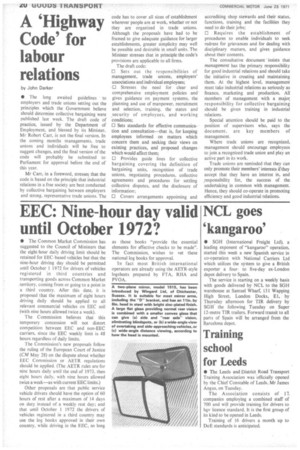EEC: Nine-hour day valid until October 1972?
Page 22

If you've noticed an error in this article please click here to report it so we can fix it.
• The Common Market Commission has suggested to the Council of Ministers that the eight-hour daily driving limit should be retained for EEC-based vehicles but that the nine-hour driving day should be permitted until October 1 1972 for drivers of vehicles registered in third countries and transporting goods across Common Market . territory, coming from or going to a point in a third country. After this date, it is proposed that the maximum of eight hours driving daily should be applied to all relevant commercial vehicles on EEC soil (with nine hours allowed twice a week).
The Commission believes that this temporary concession will not distort competition between EEC and non-EEC carriers, since the EEC weekly limit is 48 hours regardless of daily limits.
The Commission's new proposals follow the ruling of the European Court of Justice (CM May 28) on the dispute about whether EEC Commission or AETR regulations should be applied. (The AETR rules are for nine hours daily until the end of 1973, then eight hours daily. with nine hours allowed twice a week—as with current EEC limits.) Other proposals are that public service vehicle drivers should have the option of 60 hours of rest after a maximum of 14 days on duty instead of a weekly rest day; and that until October 1 1972 the drivers of vehicles registered in a third country may use the log books approved in their own country, while driving in the EEC, so long as those books "provide the essential elements for effective checks to be made". The Commission, wishes to vet these national log books for approval.
In fact most British international operators are already using the AETR-style logsheets prepared by FTA, RHA and PVOA.
A two-plane mirror, model 1515, has been introduced by Wingard Ltd, of Chichester, Sussex. It is suitable for most mirror arms, including the "D" bracket, and has an 11 in. by Bin, head in steel with bright zinc-plated finish. A large flat glass providing normal rear vision is combined with a smaller convex glass that can give (a) side and "rear axle" vision, eliminating blindspots, or (b) a wide-angle view of overtaking and side-approaching vehicles, or (c) wide-angle distance viewing, according to how the head is mounted.




































































































